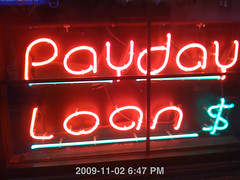- RT @MoneyMatters: Frugal teen buys house with 4-H winnings http://bit.ly/amVvkV #
- RT @MoneyNing: What You Need to Know About CSAs Before Joining: Getting the freshest produce available … http://bit.ly/dezbxu #
- RT @freefrombroke: Latest Money Hackers Carnival! http://bit.ly/davj5w #
- Geez. Kid just screamed like she'd been burned. She saw a woodtick. #
- "I can't sit on the couch. Ticks will come!" #
- RT @chrisguillebeau: U.S. Constitution: 4,543 words. Facebook's privacy policy: 5,830: http://nyti.ms/aphEW9 #
- RT @punchdebt: Why is it “okay” to be broke, but taboo to be rich? http://bit.ly/csJJaR #
- RT @ericabiz: New on erica.biz: How to Reach Executives at Large Corporations: Skip crappy "tech support"…read this: http://www.erica.biz/ #
Book Review: Delivering Happiness
In April, I was given an advanced reader copy of Delivering Happiness by Tony Hsieh on the condition that I give it an honest review. Delivering Happiness is being released today and here is my review.
Tony Hsieh was one of the founders of LinkExchange, which sold to Microsoft for $256 million in 1999. Shortly thereafter, he became affiliated with Zappos.com and ended up as CEO. Zappos.com was later sold to Amazon.com as a “wholly-owned subsidiary” in a stock-exchange transaction valued at $1.2 billion.
Delivering Happiness is his story and that of the creation and management of Zappos.com.
The book is divided into three sections: Profits, Passion, and Purpose.
Section 1 is largely autobiographical. It tells the story of Hsieh’s business ventures all through his life, from a failed worm farm to a failed newspaper to an abandoned greeting card business. Obviously the business of having children sell greeting cards had improved between his childhood and mine, because, when I did it, there were many more choices than just Christmas cards. I still have both the telescope and microscope I earned selling overpriced greeting cards. An important lesson imparted is that past success is not an indicator of future success. Different personalities, goals, and economics can change the result of two nearly identical activities.
Hsieh tells the story of the excitement of building LinkExchange and how he knew it was time to move on when the excitement faded, largely due to a surprising change to the corporate culture. After leaving, he spent some time just living and reviewing his past activities. He came to the conclusion that the happiest times of his life didn’t involve money. Doing things right beats strictly maximizing profits. Taking business lessons from the poker table, he reminds his readers that the Right Decision may lose sometimes, but it is still Right.
When he gets into building his business on a foundation of relationships, he is reminiscent of Keith Ferrazzi. Don’t network. Build your relationships based on friendship and let the friendship be it’s own reward. The rest will follow.
Section 2–while denying it was intended–reads heavily like marketing copy. It is almost entirely about how wonderful Zappos.com is to work for and with. I think it is fascinating to read about how successful businesses are built and how the corporate culture comes with that, but it’s not for everyone. The important points from this section include being open to necessary change without being reckless and their insistence on transparency. I don’t believe in hoarding information and it’s wonderful to hear others feel the same way. They go as far as giving all of the profitability and sales numbers to the vendors, live, which makes the vendors feel respected and gives the vendors an opportunity to suggest future orders based on past trends. That saves time and effort for the buyers at Zappos.com.
Section 3 attempts to tie the business lessons to life lessons and almost–but not quite–succeeds. After discussing differences in vision and alignment between the Zappos executives and the board, he talks about his growing speaking arrangements. When he started, he nervously memorized his presentations, resulting in mediocre speeches. When he discovered his “flow”, it all improved. His method of writing and speaking involves being passionate about his topic, telling personal stories, and being real. When he adopted that plan, his speaking became natural and popular.
In the final chapter, Hsieh actually discusses happiness. His equation is Perceived Control + Perceived Progress + Connectedness + Vision & Meaning = Happiness. He works to apply all of this as a part of the corporate culture at Zappos, giving the employees a measure of control over their advancement, duties, and culture. The employees help write the Corporate Culture book, which is given to all new hires and vendors. I intend to get a hold of a copy in the near future. It sounds like a fascinating read.
He also addresses the three types of happiness: Pleasure, Passion, and Higher Purpose, also described as Rockstar, In The Zone, and Being a Part of Something Bigger. The first is fleeting, and the last is long-lasting.
Would I recommend the book?
Yes. I found Delivering Happiness to be incredibly interesting, but, if you have no interest in how a successful-but-not-traditional company is built and run, or if you are bored by successful people, this book is not for you. The book is largely autobiographical and a case study in the success of Zappos.com. If that sounds remotely interesting, you will not regret reading this book.
Now, the fun part. I was given two copies of the book. The first one is becoming a permanent part of library. The second is being given away.
Giveaway
There are three ways to enter:
1. Twitter. Follow me and post the following: @LiveRealNow is giving away a copy of Delivering Happiness(@dhbook). Follow and RT to enter. http://bit.ly/czd31X
2. Become a fan on Facebook and post about the giveaway.
3. Post about the giveaway on your blog and link back to this post.
That’s 3 possible entries.
Next Sunday, I will throw all the entries in a hat and draw a name.
Future Reviews
If you have a book you’d like me to review, please contact me.
Charity is Selfish
I try to give 10% of my income to charity. I don’t succeed every year, but I do try.
I don’t give because I’m generous. I give because I’m selfish.
If you give to charity, you are too.
I’m not talking about people who give to charity strictly for the tax deduction, though that is selfish too. I’m referring specifically to the people who give to charity out of the goodness of their hearts.
If I give a thousand dollars worth of clothes to a homeless shelter, I get a warm fuzzy feeling knowing that I helped people stay warm.
If I send $100 to the Red Cross for whatever terrible disaster happened shortly before I made the donation, it makes me feel good to have contributed to saving those lives.
The put-the-inner-city-kids-on-a-horse thing we do? Makes me happy to get those kids into a positive situation.
Donating blood? Yay, me! I’m saving lives!
While it’s nice to help other people, that’s not the ultimate reason I’m doing it. I do it because it makes me feel good about myself to help other people, particularly people who–for whatever reason–can’t help themselves.
That’s the basis of altruism. It’s not about helping others, it’s about feeling good about helping others.
The truly selfish, the evil dogooders, are the ones who want to raise taxes to give it away as “charity”. They get to feel like they are doing something and helping others while not actually contributing themselves and, at the same time, stealing that warm fuzzy feeling from the people who are providing the money to start with.
Evil.
Charity has to be done at a personal, local level or the benefits to the giver are eliminated while the benefits to the receiver are lessened. Bureaucracy doesn’t create efficiency.
For the record, if it’s taken by force, by tax, it isn’t charity. Charity cannot be forced. Forcing charity is, at best, a fraudulent way for petty politicians, bureaucrats, lobbyists, and activists to feel they have power over others.
Again, evil.
Lost Wallet: What to Do Before It’s Gone
I’ve never been mugged. Hopefully, fate has decided that I never will be. Given my habits, it is far more likely that my money clip will fall out of my wallet without me noticing.
That’s a significant piece of my life. That would mean I lost my driver’s license, my debit card, my business credit card, my insurance cards, my carry permit, and the only credit card I carry.
What happens when you lose your wallet? You go to the DMV and get your driver’s license replaced. You call your credit card companies and ask them to invalidate your credit card numbers and send you new cards. You write off the missing cash and hope you don’t need the business cards that you tucked in behind the photo of your great-grand-uncle’s neighbor’s cousin’s mistress’s puppy.
How do you reach your credit card company? You take the card out of your wallet, flip it over, and call the number on the back. But you lost your wallet? What now?
Do you have every statement, that comes with the phone numbers you need to call? I don’t. At this moment, I do not have the phone number for the bank that issues the debit card for my Health Savings Account. I don’t actually know who issued the card. I don’t even know who I would call to report the card missing.
How do you prepare for that? What can you do do make your life much less miserable when your wallet walks aways with a pickpocket, or falls out of your pocket while you’re tooling down the highway on the back of a motorcycle doing 100 miles per hour, dodging the police and winking at the innocent passerby rocking out to really bad back-room country western music in a late model orange convertible? (That’s probably just me.)
How would you prepare for a lost wallet?
There is an 6 step solution to remove all of the worry about someone finding your wallet and using your credit card to fund a Russian adult chat membership, the only site where basement-dwelling losers can talk to someone pretending to be the cooperative mail-order bride they are about to order.
- Take everything that matters out of your wallet.
- Find a copy machine or a scanner.
- Put everything from your wallet on the scanner.
- Scan it.
- Flip the cards over and scan again.
- Either print the scan and put it in a fire-proof safe, or encrypt it and email it to someone you trust who does NOT live in the same house you do. If your house burns down, you want to have access to the files.
Depending on the number of things you keep in your wallet, you might have to repeat the steps a few times to get it all copied. You definitely want to copy both sides, so you can have the card numbers and the phone numbers saved.
Now, if you lose your wallet, you have all of the information you need to deal with the problem and get those cards cancelled.
How do you track your cards and contact information?
How to Prioritize Your Spending
Don’t buy that.
At least take a few moments to decide if it’s really worth buying.
Too often, people go on auto-pilot and buy whatever catches their attention for a few moments. The end-caps at the store? Oh, boy, that’s impossible to resist. Everybody needs a 1000 pack of ShamWow’s, right? Who could live without a extra pair of kevlar boxer shorts?
Before you put the new tchotke in your cart, ask yourself some questions to see if it’s worth getting.
1. Is it a need or a want? Is this something you could live without? Some things are necessary. Soap, shampoo, and food are essentials. You have to buy those. Other things, like movies, most of the clothes people buy, or electronic gadgets are almost always optional. If you don’t need it, it may be a good idea to leave it in the store.
2. Does it serve a purpose? I bought a vase once that I thought was pretty and could hold candy or something, but it’s done nothing but collect dust in the meantime. It’s purpose is nothing more than hiding part of a flat surface. Useless.
3. Will you actually use it? A few years ago, my wife an cleaned out her mother’s house. She’s a hoarder. We found at least 50 shopping bags full of clothes with the tags still attached. I know, you’re thinking that you’d never do that, because you’re not a hoarder, but people do it all the time. Have you ever bought a book that you haven’t gotten around to reading, or a movie that went on the shelf, still wrapped in plastic? Do you own a treadmill that’s only being used to hang clothes, or a home liposuction machine that is not being used to make soap?
3. Is it a fad? Beanie babies, iPads, BetaMax, and bike helmets. All garbage that takes the world by storm for a few years then fades, leaving the distributors rich and the customers embarrassed.
4. Is it something you’re considering just to keep up with the Joneses? If you’re only buying it to compete with your neighbors, don’t buy it. You don’t need a Lexus, a Rolex, or that replacement kidney. Just put it back on the shelf and go home with your money. Chances are, your neighbors are only buying stuff so they can compete with you. It’s a vicious cycle. Break it.
5. Do you really, really want it? Sometimes, no matter how worthless something might be, whether it’s a fad, or a dust-collecting knick-knack, or an outfit you’ll never wear, you just want it more than you want your next breath of air. That’s ok. A bit disturbing, but ok. If you are meeting all of your other needs, it’s fine to indulge yourself on occasion.
How do you prioritize spending if you’re thinking about buying something questionable?
Why I Hate Payday Loans
I hate payday loans and payday lenders.
The way a way a payday loan works is that you go into a payday lender and you sign a check for the amount you want to borrow, plus their fee. They give you money that you don’t have to pay back until payday. It’s generally a two-week loan.
Now, this two week loan comes with a fee, so if you want to borrow $100, they’ll charge you a $25 fee, plus a percent of the total loan, so for that $100 loan, you’ll have to pay back $128.28.
That’s only 28% of actual interest; that’s not terrible. However, if you prorate that to figure the APR, which is what everyone means when they say “I’ve got a 7% interest rate”, it comes out to 737%. That’s nuts.
They are a very bad financial plan.
Those loans may save you from an overdraft fee, but they’ll cost almost as much as an overdraft fee, and the way they are rigged–with high fees, due on payday–you’re more likely to need another one soon. They are structured to keep you from ever getting out from under the payday loan cycle.
For those reasons, I consider payday loan companies to be slimy. Look at any of their sites. Almost none are upfront about the total cost of the loan.
So I don’t take their ads. When an advertiser contacts me, my rate sheet says very clealy that I will not take payday loan ads. The reason for that is–in my mind–when I accept an advertiser, I am–in some form–endorsing that company, or at least, I am agreeing that they are a legitimate business and I am helping them conduct that business.
In all of the time I’ve been taking ads, I’ve made exactly one exception to that rule. On the front page of that advertiser’s website, they had the prorated APR in bright, bold red letters. It was still a really bad deal, but with that level of disclosure, I felt comfortable that nobody would click through and sign up without knowing what they were getting into. That was a payday lender with integrity, as oxymoronic as that sounds.






